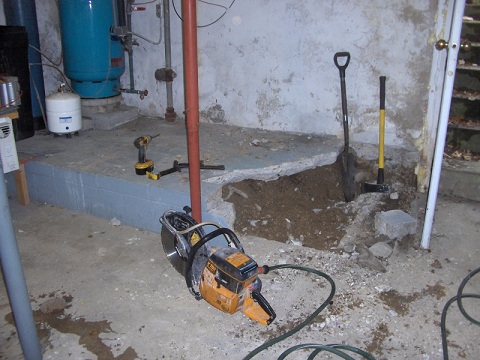Even before purchasing my house, I knew that there were water issues with the basement. Being built in the late 1800s, it doesn’t have any drain tile to help remove water from around the house. It did already have a sump and a pump. However, the only water that got to the sump had to drain through the soil (later found to be mostly clay) to it and then it could be pumped out. This issue lead to the problem of a continually very moist basement. It had that unpleasant musty smell if the dehumidifier wasn’t running during summer. In winter things would be fine, but in spring I’d have small puddles in the basement as well as when ever we got a good downpour or a few days of good steady rain. The water did not come through the walls, but rather up from cracks in the floor.


To fix the problem, we needed to add some drain tile under the concrete floor and plumb it to the sump. We started with a concrete saw and made two cuts where the sides of the trough would be for the drain tile to be laid down. You can rent a concrete saw at a tool rental place for a reasonable price.
We made the cuts run to the problem areas of the basement where water would seep through the floor. The proper way to do it is actually to run drain tile around the entire exterior wall. However, the water problem wasn’t that bad so we decided to take this shorter and easier route.

The next step was done with another rented tool, an electric hammer / jack hammer. We had started trying to break up the concrete with a sledge hammer but it just wasn’t working well for us. As you can see the sharper corners broke off which just makes for more work later on. Renting the jack hammer was also cheap and made the job go much quicker.

After getting all the concrete hauled out of the basement, it was time to dig down and create a trench where the drain tile could be laid down. A trenching shovel came in quite handy here (long and narrow), but we still ran into a lot of clay which is a bear to dig through. Not only that, but after its dug up you still have to haul it out of the basement.
For more information see the forum thread about the project.


Comments on this entry are closed.